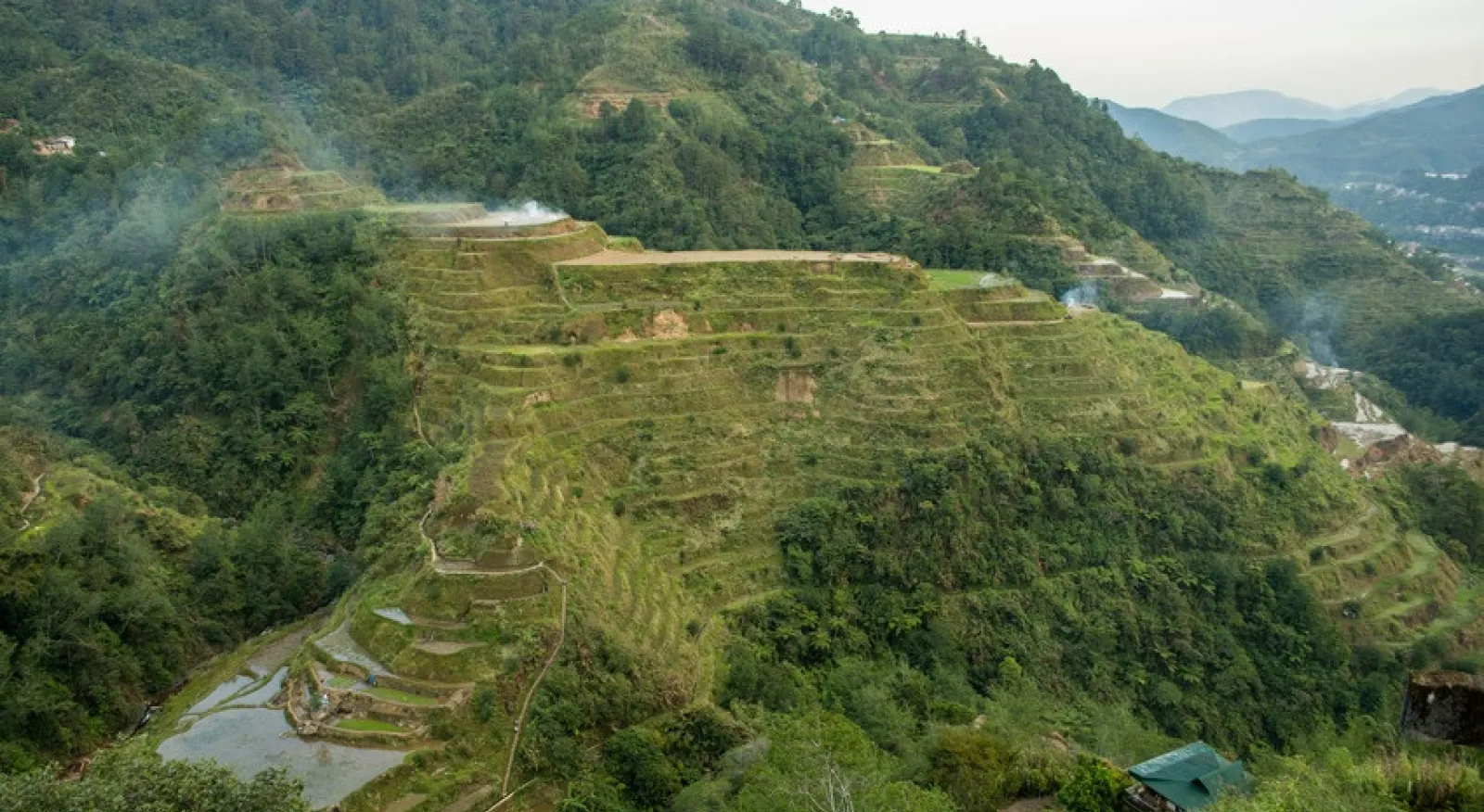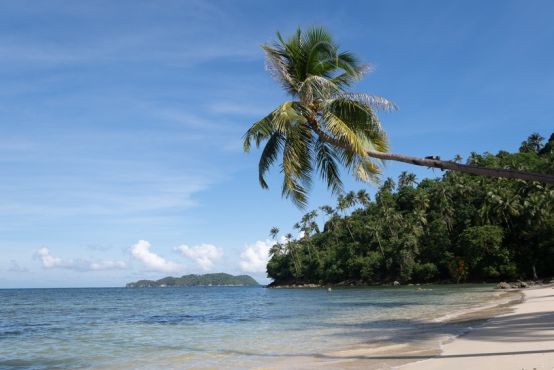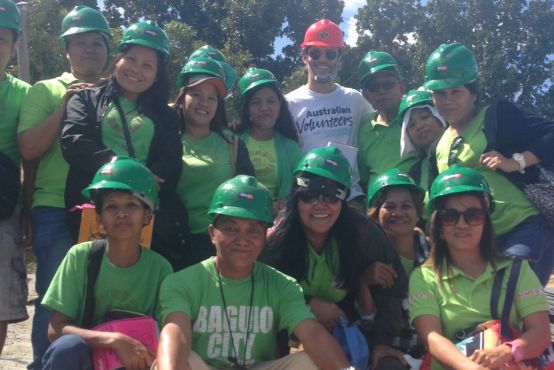
About Philippines
Philippines is unique in many ways. More than 110 million people live throughout the volcanic archipelago, which spans over 7,000 islands and has a total land area just larger than the state of Victoria.
According to the World Bank, more than 100 scientists have declared Philippines as the world’s ‘centre of marine biodiversity’ because of its vast species of marine and coastal resources. The country is part of the Coral Triangle – the epicentre for marine biodiversity, known as the Amazon of the Sea. It is an area with more species of fish and coral than any other marine environment on earth.
Philippines was originally home to many small settlements and diverse subgroups living across many islands, before being colonised by the Spanish in the 16th century, and then the USA in the 19th century. As a result of the Spanish rule, words like fiesta (party), siesta (afternoon rest), regalo (gift), and many others commonly used in the Filipino language. In 1946, the Filipino people succeeded in their fight for independence. What followed was a period of conflict, post-war reconstruction, political transitions, economic challenges, and subsequent efforts towards democratization and economic development.
Socio-economic conditions for many Filipinos are difficult and there continues to be a growing disparity between rich and poor. Additionally, much of the country’s economic development and infrastructure projects are disproportionally focused on urban centres such as Manila.
The current economic outlook in the Philippines is positive — the World Bank has recorded a healthy GDP growth rate and a decrease in overall poverty has been steady.
Australian volunteers have supported a wide range of partner organisations in the Philippines since 2000.
Learn more about the Australian Volunteer Program's work in Philippines.
Key things to consider about volunteering in Philippines
- Extreme weather can occur, including monsoons and flooding. Read more below in the Climate section.
- Religion is very important; the majority of people practice Catholicism.
- English is very common and spoken by much of the population.
- Unlike other countries in Asia, Philippines is not known for spicy food.
Culture and religion
The Philippines boasts a rich tapestry of culture and religion that reflects its diverse history and influences. Culturally, the Philippines is a melting pot of indigenous, Malay, Chinese, and American influences. Filipino arts, dance, and cuisine reflect this amalgamation. The traditional clothing and music from across the archipelago also reflect the elegance and pride of Filipino heritage.
Overall, the Philippines' cultural and religious landscape is a testament to its ability to blend various influences into a unique and vibrant tapestry that defines its identity. Filipino hospitality, locally known as "pakikisama," is a hallmark of the culture, emphasizing warmth and friendliness and in larger urban centres such as Manila, Cebu, Davao, Iloilo, and Bacolod you will also find stronger western influences with many foreigners and expatriates living in these areas
Religion
The Philippines is unique among its neighbours in the Southeast Asian region with most Filipinos identifying as Christian (more than 92%), with the vast majority being Roman Catholic. Around 6% of the population is Islamic, and indigenous Philippine folk religions are also present.
Dress
The Philippines is a diverse country with a mix of cultural influences, and dress codes vary depending on the context, location, and occasion. In urban areas people often dress in western-style clothing, and casual and comfortable clothing is generally suitable for everyday activities. When visiting religious sites, it is advised to dress modestly. Filipinos often like to dress up for formal occasions.
Language
More than 52 million Filipinos speak English, making it the fifth largest English-speaking nation behind the US, India, Pakistan, and the UK. Filipino (Tagalog) and English are both official languages, but there are 170 languages spoken across the country.
As with any country, fluency depends on the education, socio-economic background, and employment but many Filipinos (especially in urban areas) are fluent in English. You will often hear Filipinos “code switch” or combine Tagalog or Bisaya and English while speaking (Taglish or Bislish).
The program provides funding to support language lessons. More information on this process will be available during the onboarding process.
Explore our Pride Guides
LGBTQIA+ program participants must be aware of the country's context before undertaking an assignment. Pride Guides are designed to introduce key issues related to people with diverse SOGISEC & their participation in the program.
Learn more
Day to day life
Climate
The Philippines has a tropical and maritime climate. It is characterised by relatively high temperatures, high humidity and abundant rainfall. It is similar in many respects to the climate of the countries of Central America. Rainy season is usually from June to November and dry season is from December to May.
It is important to note the effects of climate change on day-to-day life and weather patterns in Philippines, this will look different based on location. According to the World Bank, the Philippines is “home of the highest disaster risk levels in the world, and these are projected to intensify as the climate changes”.
Telecommunications
Internet speeds and mobile signals are more accessible in urban areas and less in rural and remote provinces. Most households, offices and public establishments in larger cities have wifi.
Pocket/mobile wifi is available which people use outside of the cities. Most used are Smart 5G Rocket Wifi and Globe MyFi LTE-Advanced Pocket Wifi, two of the biggest telecoms in the country. These are easily available for purchase in the stores.
Food and dining
It is generally easy to find food in the Philippines. Groceries are easier to find in bigger cities, but each town has a "Palengke" – a marketplace where you can buy everyday goods such as vegetables, fruits, meats, condiments and snacks. Dietary restrictions are not very common in most rural areas, so the terms vegan, vegetarian, pescatarian, or gluten-free might not be well known.
Accommodation
There are different types of accommodation available including a small room attached to a landlord’s home or a whole house usually with two bedrooms and one bathroom. Condominiums and apartments are more difficult to find in rural areas. Your program country team or local colleagues can help you source suitable accommodation.
Find out about our in-country allowances.
Transport
A common mode of transportation in the Philippines is the "Jeepney," which were originally made from US military jeeps left over from World War II. You can take a Jeepney to get to the next town or the nearby city, unlike the tricycles which are widely used to get around one city/municipality. Buses are commonly used for inter-provincial travels. As an archipelagic country, some provinces may be accessible only by plane or using ferry systems.
Volunteer with us in the Philippines!
The Philippines is rich in culture, history and natural wonders, with some of the friendliest people you are ever likely to meet. Watch this video to discover what it's like to be an Australian volunteer in the Philippines.

Personal Safety
As with anywhere in the world, crime exists in the Philippines. Risks can be reduced by avoiding situations that make you feel uncomfortable and by taking precautions. Crime at the village or town level is less frequent than in the large cities; people know each other and generally are less likely to steal from their neighbours.
Tourist attractions in large towns are favourite sites for pickpockets. There is both opportunistic and organised crime in the Philippines. Following are safety concerns in the Philippines to be aware of - theft, robbery, and mugging; crimes related to illegal drugs; natural calamities such as volcanic eruptions, typhoons, and earthquakes; and transportation-related accidents, including boats, vehicles and bicycles. Travel to the southern Philippines is restricted.
Personal safety issues constantly evolve, we recommend you keep an eye on Smart Traveller for current information.
Mobility and accessibility
We’re committed to ensuring that international volunteering is inclusive and accessible to Australians from a range of backgrounds, with diverse perspectives, identities and abilities.
To support this, access and inclusion plans are available for volunteers with disabilities to assess their needs and ensure their living and working requirements are fully considered. Indigenous Pathways is an Indigenous-led program that focuses on providing culturally safe, flexible and tailored support for Aboriginal and Torres Strait Islander volunteers.
Before applying for a volunteer assignment in Philippines, please do some further research on living in the country and on the organisation you are hoping to volunteer with. Successful applicants will have the opportunity to discuss expected living and working arrangements with their recruitment officer.
A career building experience
Construction manager Lachlan James spent 10 months in the Philippines working with a human rights NGO, where he learnt new skills and was challenged professionally. In his own words, here’s Lachlan’s story.
Learn more